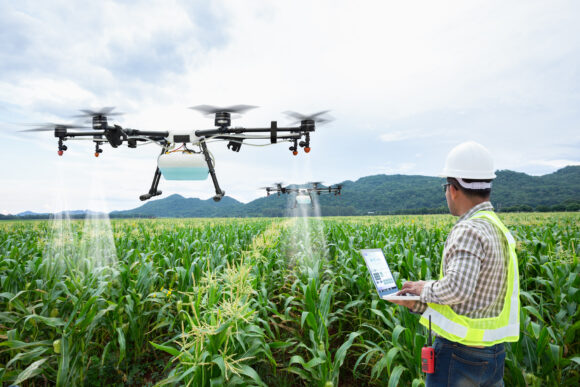Lately, it seems as though we’re surrounded by discussions about how best to grow the American industrial sector. A key component of this discussion hinges on how to supply and power these industries in both cost-effective and environmentally conscious ways. Meeting these needs will likely require fresh ideas and fresh eyes on some traditional practices.
We’re already seeing some of these innovations unfold–from earthy alternatives homebuilders are using for the residential properties of the future to new ways different industries are powering and improving the American economic engine. While these advancements represent an intriguing evolution for the industrial sector, they may also introduce potential risks for insurers to monitor.
Bio Building on the Rise
As the environmental risks homeowners face continue to evolve–such as wind, fire, and other weather-related threats–so, too, does the mix of materials found in new residential homes. While builders are increasingly choosing alternative materials like concrete to erect and fortify their homes against such risks, researchers and some homebuilders are also turning to a variety of biogenic materials such as soy, hemp, and straw to insulate their residential properties.
Hempcrete, for example, utilizes a mixture of hemp stalks, lime binder, and water to insulate homes or hold weight in non-load-bearing walls, and homebuilders in states such as Texas, Michigan, and Colorado have reportedly constructed homes using this material.
One of the most significant benefits of incorporating any biogenic material into a home is its carbon-absorbing capabilities. Hempcrete, for example, absorbs twice as much carbon as it emits, making it nearly “carbon negative.” This lightweight material can help regulate room temperatures, and unlike standard insulation materials, it can fend off mold development by absorbing moisture. The lime binder used in hempcrete is also non-combustible, making hempcrete fire-resistant.
Hempcrete is not without its potential drawbacks. The material is not strong enough to hold structural loads and must be accompanied by separate framing material, an added expense. Supply chain and logistical questions may also impede the growth of hempcrete in homebuilding: The material, and builders with the know-how to use it, remain in short supply in the U.S. Hempcrete also can require long periods of time to dry, especially in cool or damp environments.
The use of hempcrete remains in its infancy in the U.S. as compared to the rest of the world, though there are some indicators that more rapid adoption is on the horizon.
America’s Modular, Mobile Nuclear Future
America’s energy appetite is increasing, according to U.S. energy officials, driven in large part by electricity demand from data centers and the industrial sector. And while solar power is forecast to supply the bulk of increased electricity consumption in the coming years, some analysts and industries are taking a fresh look at another carbon-neutral power source: nuclear.
Small modular reactors (SMRs) are compact nuclear fission reactors with a reported capacity of up to 300 megawatts per unit, and are designed for factory assembly and scalable deployment. Unlike traditional reactors–which are larger and custom-built on-site–SMRs are projected to offer lower upfront capital costs, enhanced safety, and installation flexibility, according to the International Atomic Energy Agency. Although their projected energy output is less than that of traditional reactors, some proponents believe that their modular design and mobility–with some models, known as microreactors, designed to be moved around on the back of flatbed trucks–will allow for versatile deployment, powering everything from data centers to disaster sites.
Critics have cast doubt, however, on the ability of governments and businesses to safely and effectively scale these advanced nuclear models, pointing to budgetary and timeline challenges encountered by existing SMR projects. Other questions remain–such as fuel availability, in addition to long-unsettled questions regarding the disposal of nuclear waste–that may present obstacles to future SMR projects. A variety of designs are nevertheless under development and construction across the globe, and the first U.S.-based SMR is projected to go online sometime around 2030.
The High-Tech Farm
The modern farm is increasingly home to an electronic menagerie of drones, autonomous vehicles, robots, sensors, and AI-driven data analytics. The adoption of this suite of technologies isn’t uniform or linear across the nation’s agricultural markets, but the growing use of these technologies may help shape the future of farm risk exposures in potentially significant ways.
The process of using technological diagnostic tools to assess and maximize farm production–a practice commonly called precision agriculture–can be as relatively simple and low-tech as using variable-rate pesticide or fertilizer applicators, but it may also involve in-ground sensors, automated weeders, and a growing array of robot devices (collectively “AgTech”) that tend to both plants and livestock across their life cycles.
Approximately 27% of U.S. farms used precision farming techniques in 2023, according to the General Accountability Office, leveraging sensors, drones, autonomous vehicles, and robotics for a wide range of uses, from virtual livestock fencing to autonomous tractors.
While these technological flourishes might benefit U.S. farms, they may also create a variety of potential property, liability, and cyber risks, ranging from high upfront equipment costs to potential data privacy concerns presented by an increased reliance on robotics.
As farm insurers manage these evolving risk exposures, carriers will also have to keep an eye on the emergence of risks related to biogenic construction materials and small modular reactors as their usage increases.
Topics Trends InsurTech Tech Agribusiness
Was this article valuable?
Here are more articles you may enjoy.



 Senators Launch Probe Into Demotech’s Ratings in Florida
Senators Launch Probe Into Demotech’s Ratings in Florida  Tesla Door Safety Issues Have Owners Buying Car Escape Tools
Tesla Door Safety Issues Have Owners Buying Car Escape Tools  NTSB Unclear Who Was at Controls in Jet Crash That Killed Biffle and 6 Others
NTSB Unclear Who Was at Controls in Jet Crash That Killed Biffle and 6 Others  Three Top P/C Insurers Account for Most of Insurance AI Patents
Three Top P/C Insurers Account for Most of Insurance AI Patents 



